
Name: Lehigh & Susquehanna Layout designer: Wayne Sittner Scale: HO (1:87:1) Size: 9 x 41 feet Prototypes: Central of New Jersey; Delaware & Hudson; Delaware, Lackawanna & Western; Erie; Lackawanna & Wyoming Valley; Lehigh Valley; and Pennsylvania Locale: Northeastern Pennsylvania anthracite coal mining and cement-making regions Era: 1952-62 or 1978-85 Style: linear walkaround shelf Mainline […]
Read More…
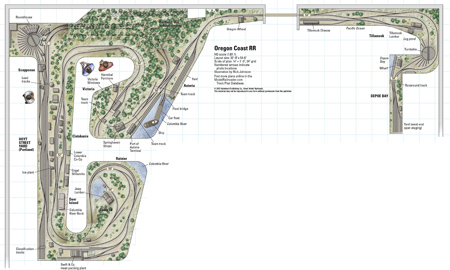
Name: Oregon Coast RR Layout designer: Mat Thompson Scale: HO (1:87.1) Size: 32′-0″ x 54′-6″ Prototype: freelanced Locale: Pacific Northwest Era: fall 1953 Style: walk-in Mainline run: 120 feet Minimum radius: 30″ (main), 24″ (branch) Minimum turnout: no. 6 (main), no. 4 (industries and yards) Maximum grade: 2.5 percent Originally appeared in the Great Model […]
Read More…
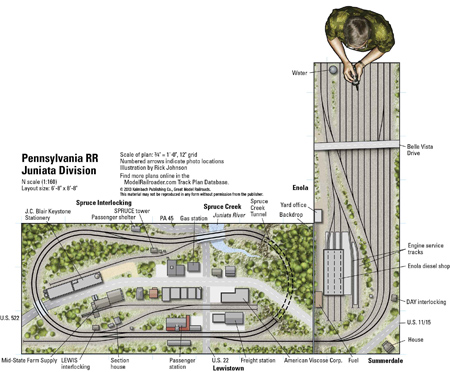
Name: Pennsylvania RR Juniata Division Layout designer: Dave Vollmer Scale: N (1:160) Size: 6′-8″ x 8′-8″ Prototype: Pennsylvania RR Middle Division Locale: central Pennsylvania Period: 1956 Style: island Mainline run: 15.4 feet Minimum radius: 13.5″ Minimum turnout: no. 5 Maximum grade: none Originally appeared in the Great Model Railroads 2014. Click on the link to […]
Read More…
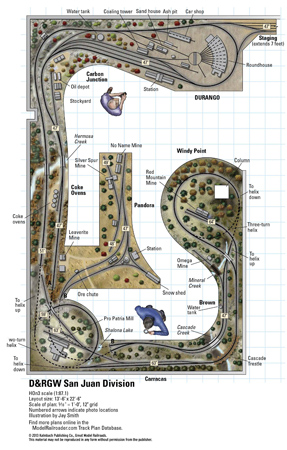
Name: San Juan Extension Layout designer: John Short Scale: HOn3 (1:87.1, narrow gauge) Size: 13′-6″ x 22′-6″ plus 7′-0″ extension Prototype: Denver & Rio Grande Western (some Rio Grande Southern) Locale: southwestern Colorado Period: September 1948 Style: walk-in Mainline run: 161 feet Minimum radius: 24″ Minimum turnout: no. 6 Maximum grade: 2.5 percent Originally appeared […]
Read More…
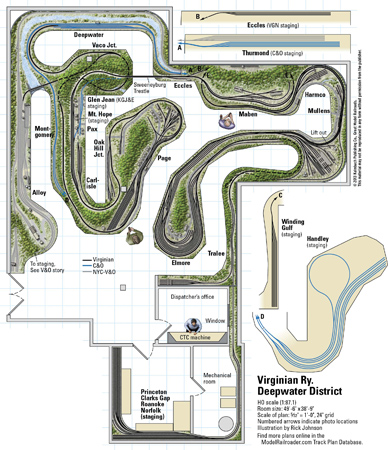
Name: Virginian Ry. Deepwater District Layout designer: Gerry Albers Scale: HO (1:87.1) Size: 40 x 50 feet, plus 19 x 24½ feet for staging Prototype: Deepwater District, VGN New River Division Locale: southern West Virginia Period: summer 1959 Style: walk-in Mainline run: 600 feet Minimum radius: 32″, 28″ in yards Minimum turnout: no. 8, no. […]
Read More…
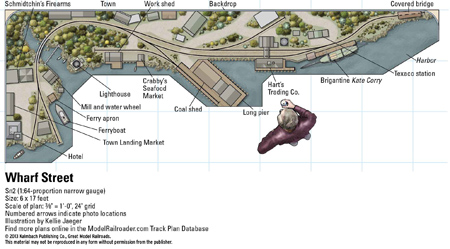
Name: Wharf Street Layout designer: Art Fahie Scale: S (1:64:1) Size: 6 x 17 foot L Prototype: Maine two-foot gauge railroads Locale: Maine coast Era: 1925 Style: shelf diorama Mainline run: n/a Minimum radius: 22″ Maximum grade: none Originally appeared in the Great Model Railroads 2014. Click here to download a PDF of this track […]
Read More…
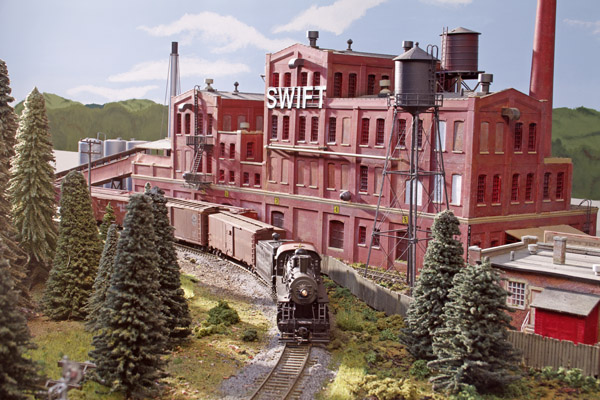
Mat Thompson’s Swift meat-packing plant ships and receives enough freight car traffic to warrant a full-time dedicated switch job on his HO scale Oregon Coast RR. Refrigerator cars Inbound iced reefers to the cooling track Cooled reefers to plant Track 1 doors for loading Outbound loaded reefers Stockcars Inbound loaded 40- foot and 50-foot cars […]
Read More…
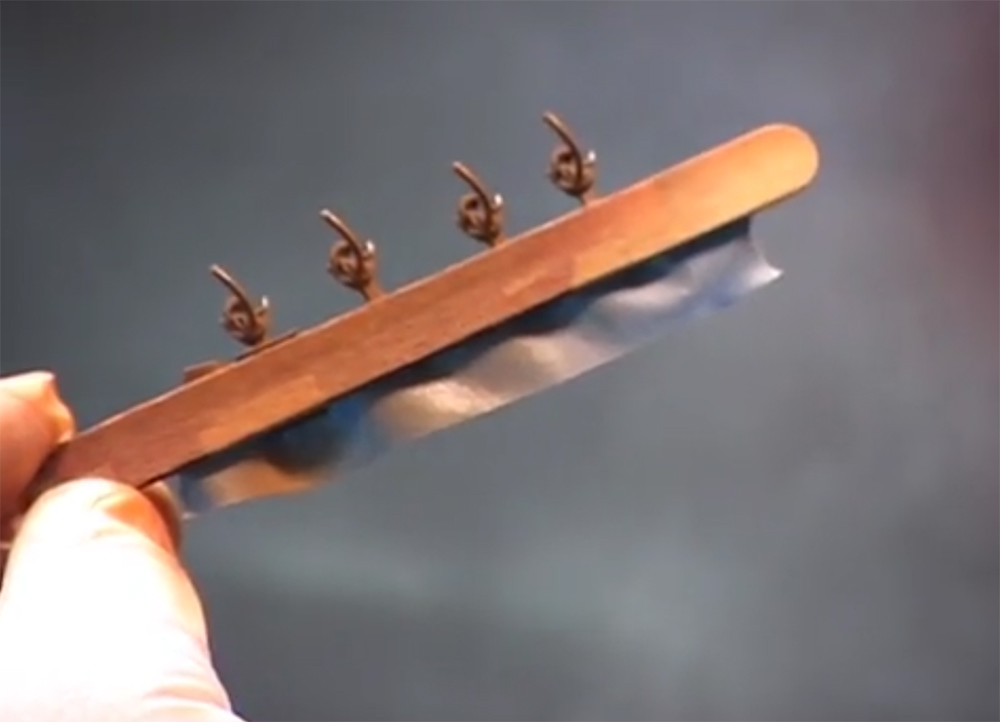
Having trouble viewing this video? Please visit our Video FAQ page Model Railroader associate editor Cody Grivno shows how to paint couplers on a locomotive. […]
Read More…
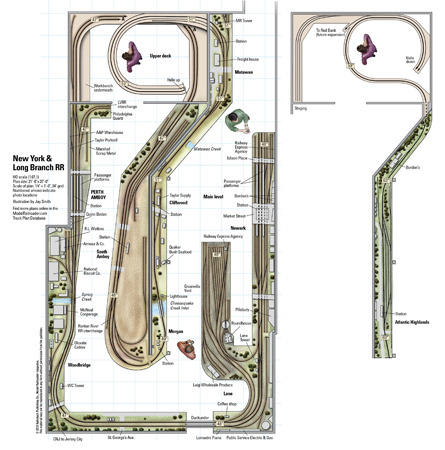
Name: New York & Long Branch RR Layout designer: Kevin Surman Scale: HO (1:87.1) Size: 21 x 34 feet Prototype: Central RR of New Jersey and Pennsylvania RR Locale: New Jersey Era: late 1950s Style: walk in Mainline run: 190 feet Minimum radius: 30″ Originally appeared in the November 2013 Model Railroader. Click on the […]
Read More…
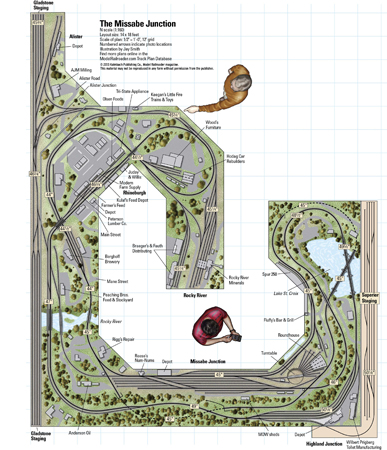
Name: Missabe Junction Ry. (2013) Layout designer: Steve Miazga Scale: N (1:160) Size: 14 x 18 feet Prototype: Soo Line Lakeshore Division Locale: northern Wisconsin and eastern Minnesota Era: 1960 to 1990 Style: walk-in Mainline run: 110 feet Minimum radius: 15″ (main line), 11″ (sidings and yards) Originally appeared in the November 2013 Model Railroader. […]
Read More…
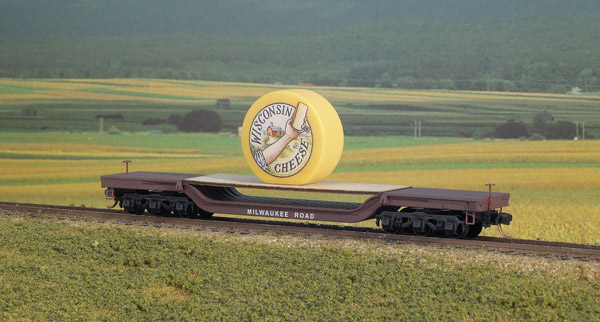
Each person who attended the N scale convention banquet received a special souvenir car compliments of Micro-Trains. That’s one mighty big wheel of cheese! The National N Scale Convention came to town this past June, so I spent a busy spring in the basement getting the layout ready for visitors. As usual, I made a list […]
Read More…
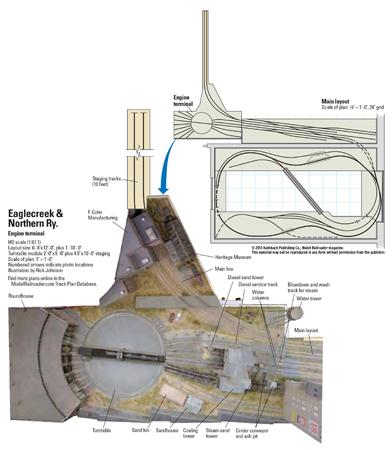
Name: Eaglecreek & Northern Ry. engine terminal module Layout designer: Flemming Ørneholm’s Size: 2 x 5 feet with 41⁄2″ x 10′-0″ staging track shelf Prototype: Union Pacific Locale: western United States Era: 1955 Style: module Minimum radius: 28″ Originally appeared in the October 2013 Model Railroader. Click on the link to download the PDF of […]
Read More…












